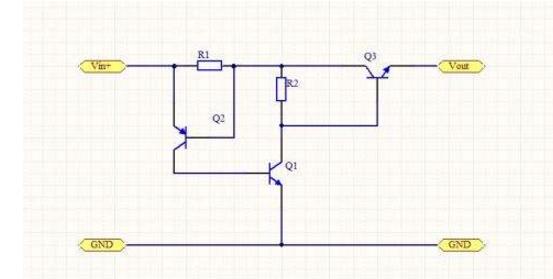Circuit protection devices are passive components that provide protection for circuits and electronic components. The circuit protection is mainly to protect the components in the electronic circuit from damage caused by overvoltage, overcurrent, surge, electromagnetic interference and the like. As an electronic engineer, it is indispensable to deal with electronic components, and it is also necessary to provide customers with protection scheme design, rectification and circuit protection device selection recommendations. However, before providing customers with solutions and selection recommendations, engineers must first understand what kind of protection the customer's products require. The main point of protection is overcurrent. Over-voltage is mainly used, and it is necessary to take into account electrostatic discharge on the basis of lightning protection. The following are some common types of circuit protection and selection points for overvoltage and overcurrent protection devices organized by FAE engineers.

Several common types of circuit protection
Over current protection
It is automatic power-off when the current is too large to prevent damage caused by the circuit and the case exceeding the rated current.
2. Over-Voltage Protection
It is mainly used to prevent over-voltage or electrostatic discharge (Discharge Suppression) damage to electronic components. It is widely used in various electronic system products such as telephones, fax machines and high-speed transmission interfaces (USB, IEEE1394, HDMI, SATA), especially It is an electronic communication device, and it is especially important to avoid damage to the electronic equipment due to over-Voltage or EOS (Electrical Over-Stress) or Electrostatic Discharge (ESD).
3. Over temperature protection (OT)
From the commercialization to the present, the temperature protection component has already passed a nail. At present, the over-temperature protection component is widely used in the occasions with special temperature requirements. Such protection components can be divided into chemical actuation type and low temperature according to the actuation principle. Alloy actuated type, in which the main feature of chemical actuated products is that it can be used as a low temperature type product (currently 48 ° C), but the structure is more complicated and the cost is higher; the low temperature alloy type is mainly a diameter. The large low-temperature fuse acts as a conduction function, and it must be ensured that the heat generated by the rated current does not melt the fuse. The low-temperature fuse is generally regulated by tin (Sn), copper (Cu), silver (Ag), and antimony. The ratio of components such as (Bi) and indium (In) adjusts the melting point.
4. Over temperature and overcurrent protection (TFR)
In recent years, with the improvement of applications, the simple temperature protection function has been unable to meet the needs of the safety protection of electric appliances, motors, motors and 3C products. Therefore, it has been developed to monitor both due to temperature, current and voltage abnormalities. The components are protected in time, and the rise of such components is mainly due to the use of lithium-ion batteries and lithium polymer batteries.
5. Overcurrent and overpressure (OCOV)
With the complication of modern electronic products, the requirements for the protection of components are also increasing, such as the comprehensive protection, limited space, etc. With the requirements of these requirements, the protection component world has set off a wave of combined packaging. As mentioned above, the over-temperature protection is also considered as a combination package, but most of the over-current and over-voltage protection package products are still in the research and development stage, and there are no mature commercial products available.
Overvoltage protection device selection:
1) Selection of the shutdown voltage Vrwm. Generally, the shutdown voltage is at least 10% higher than the maximum operating voltage of the line;
2) Selection of clamp voltage VC. VC refers to the voltage passing through the TVS in the ESD strike state, which must be less than the maximum transient voltage that can be withstood by the protected circuit;
3) Selection of surge power Pppm. Different power, different protection time, such as 600w (10/1000μs); 300W (8/20μs);
4) Selection of the interelectrode capacitance. The higher the operating frequency of the protected components, the smaller the capacitance of the TVS is required.
Selection of overcurrent protection devices:
Overcurrent protection devices mainly include disposable fuses, self-recovery fuses, fuse resistors and circuit breakers. The most important ones are self-recovery fuses. The following are the main points of PTC self-recovery fuses for overcurrent protection devices:
1. Keep the current slightly larger than the normal operating current of the user.
2. Vmax should be greater than or equal to the user's maximum operating voltage.
3. Imax is greater than the maximum fault short-circuit current.
Front Screen Glass Lens For Iphone
Glass Cover For Iphone,Front Screen Outer Glass Lens,Glass Cover With Oca,Glass Cover For Touch Screen
Shenzhen Xiangying touch photoelectric co., ltd. , https://www.starstp.com